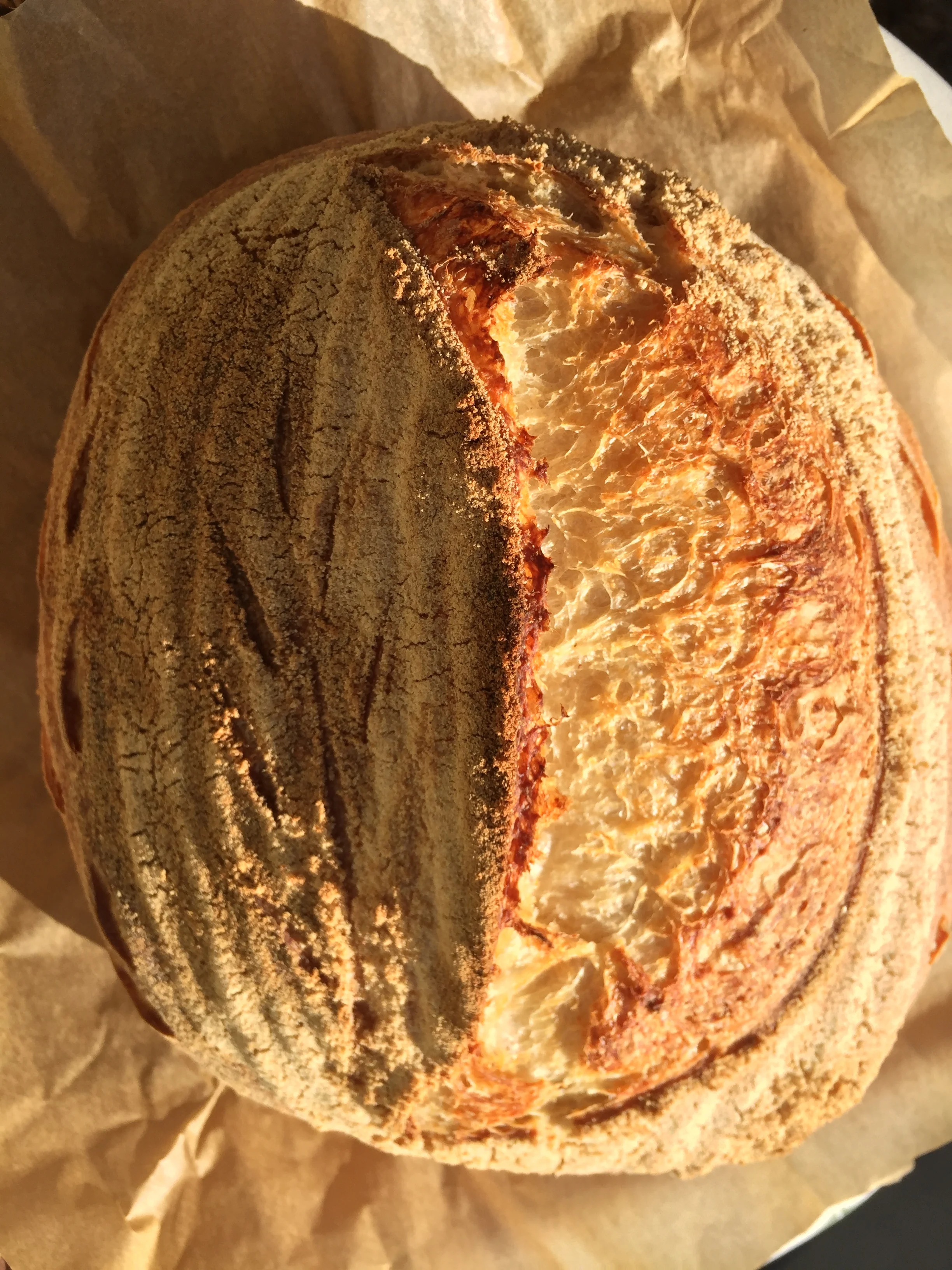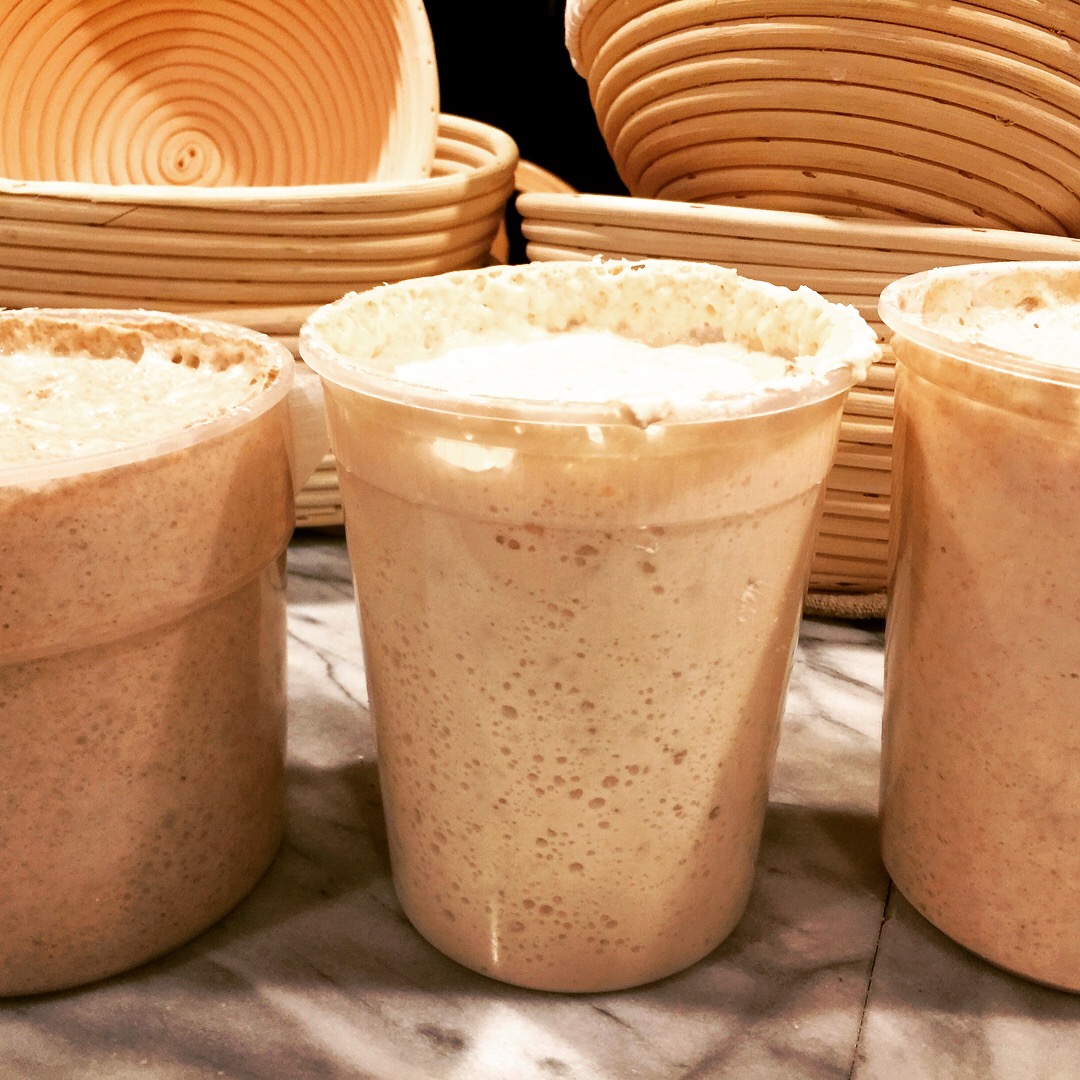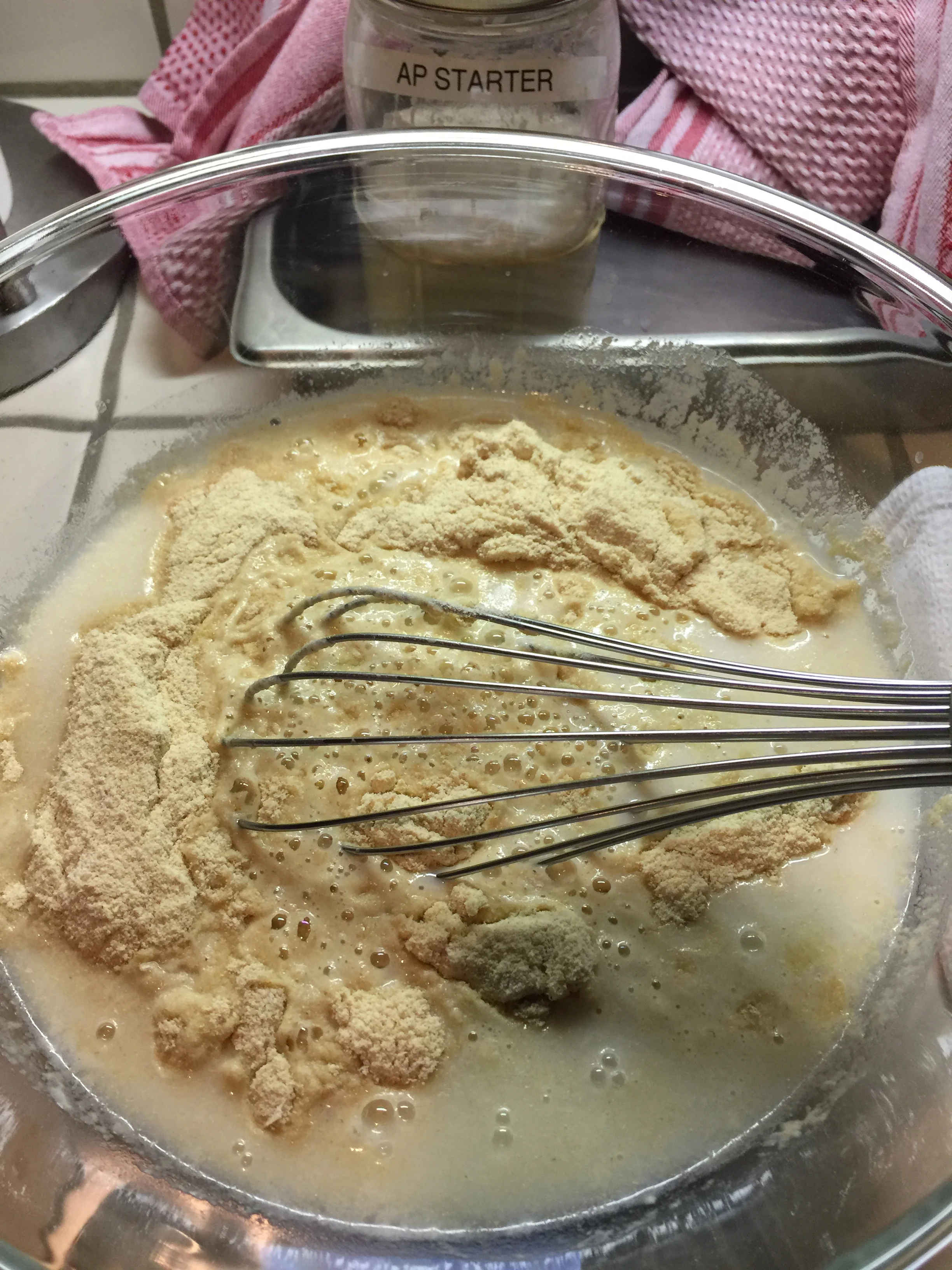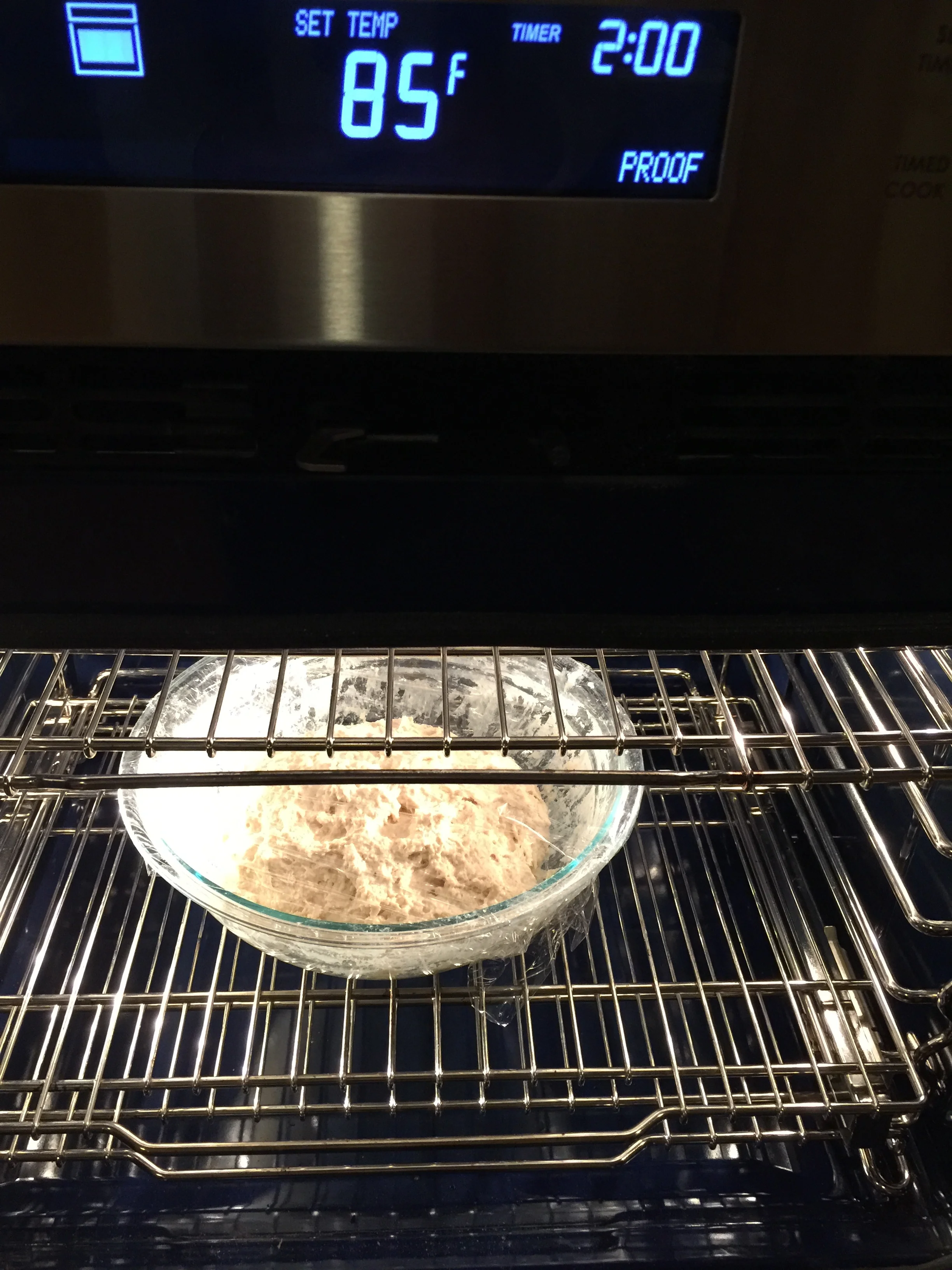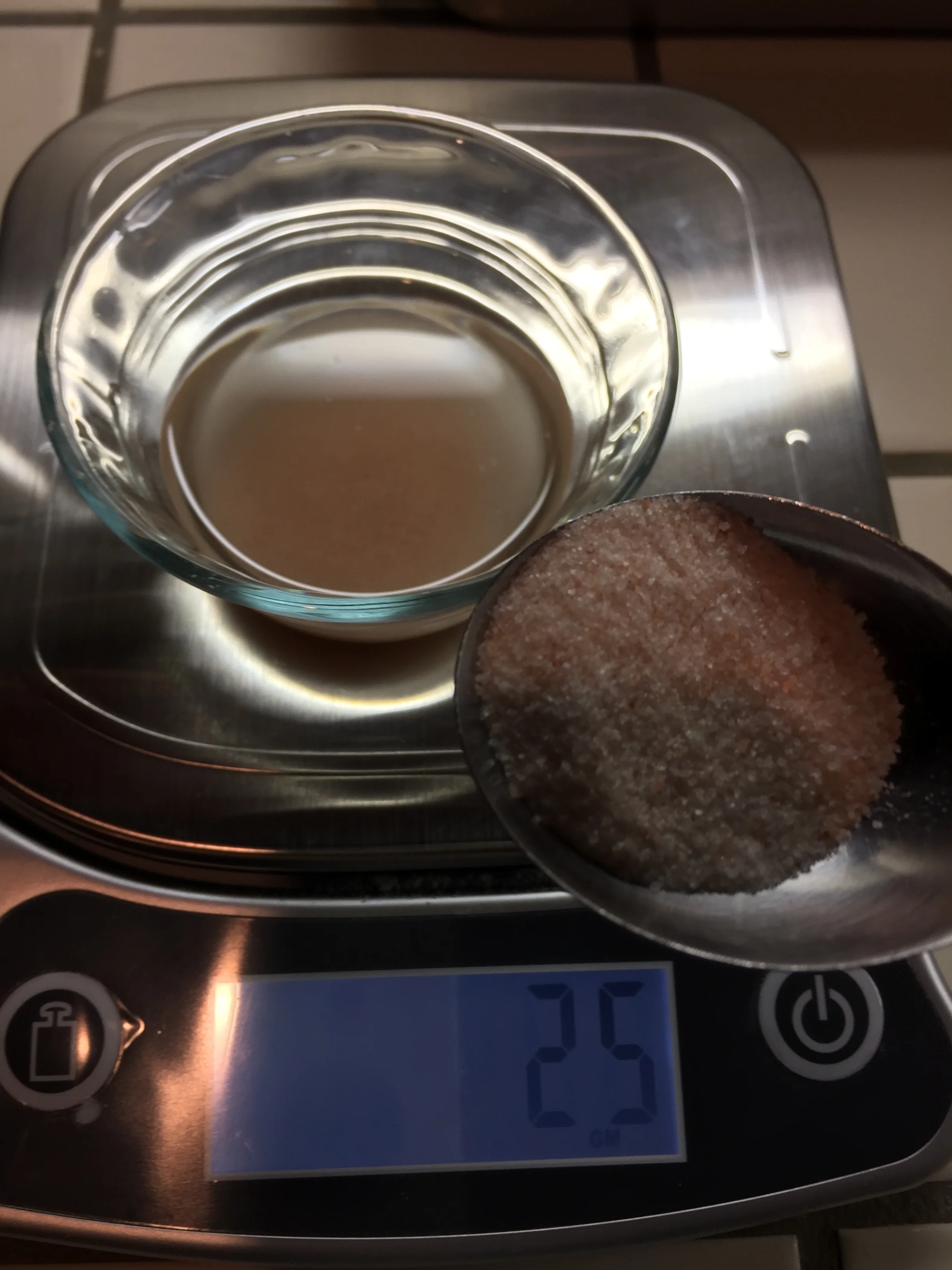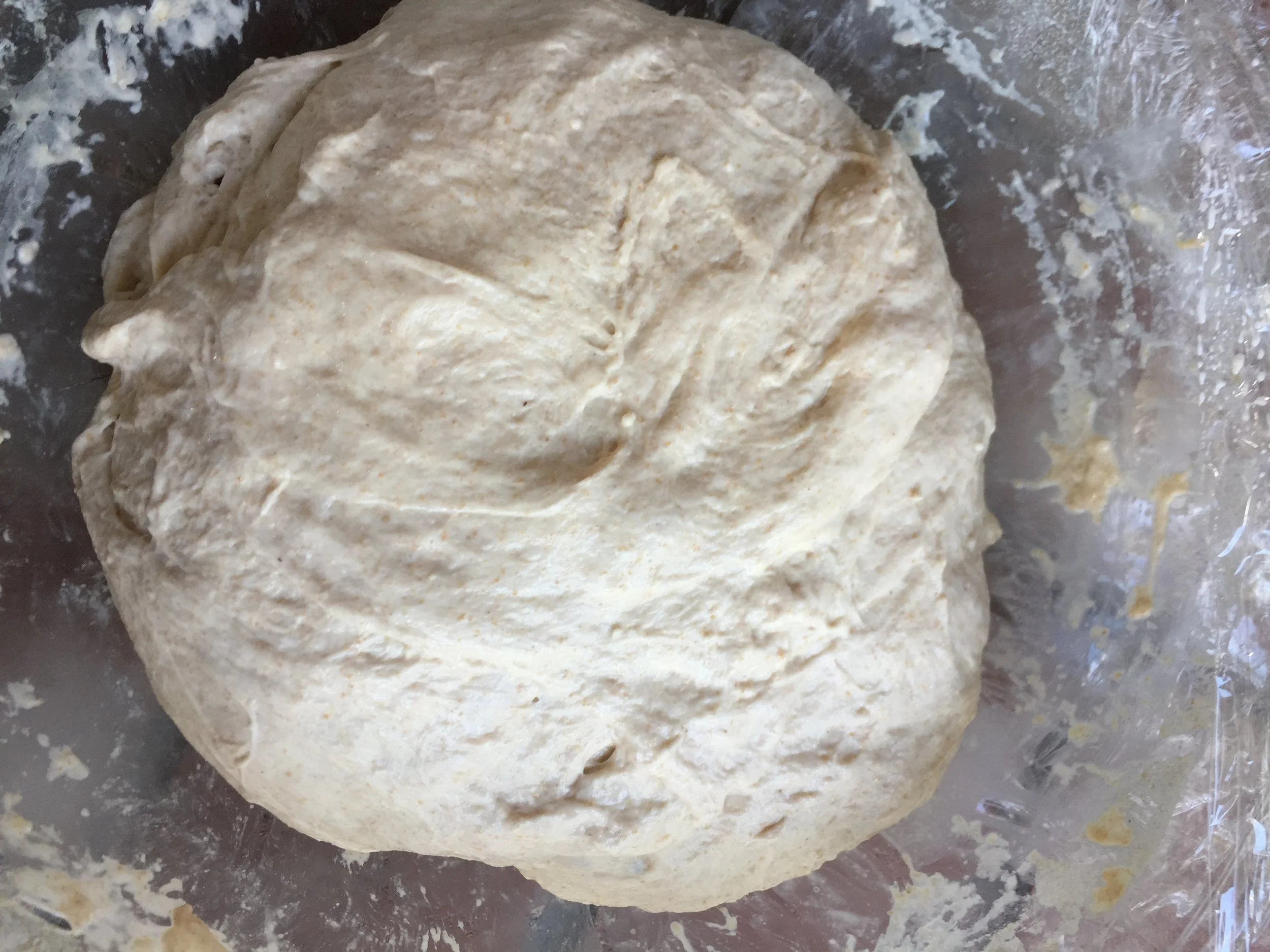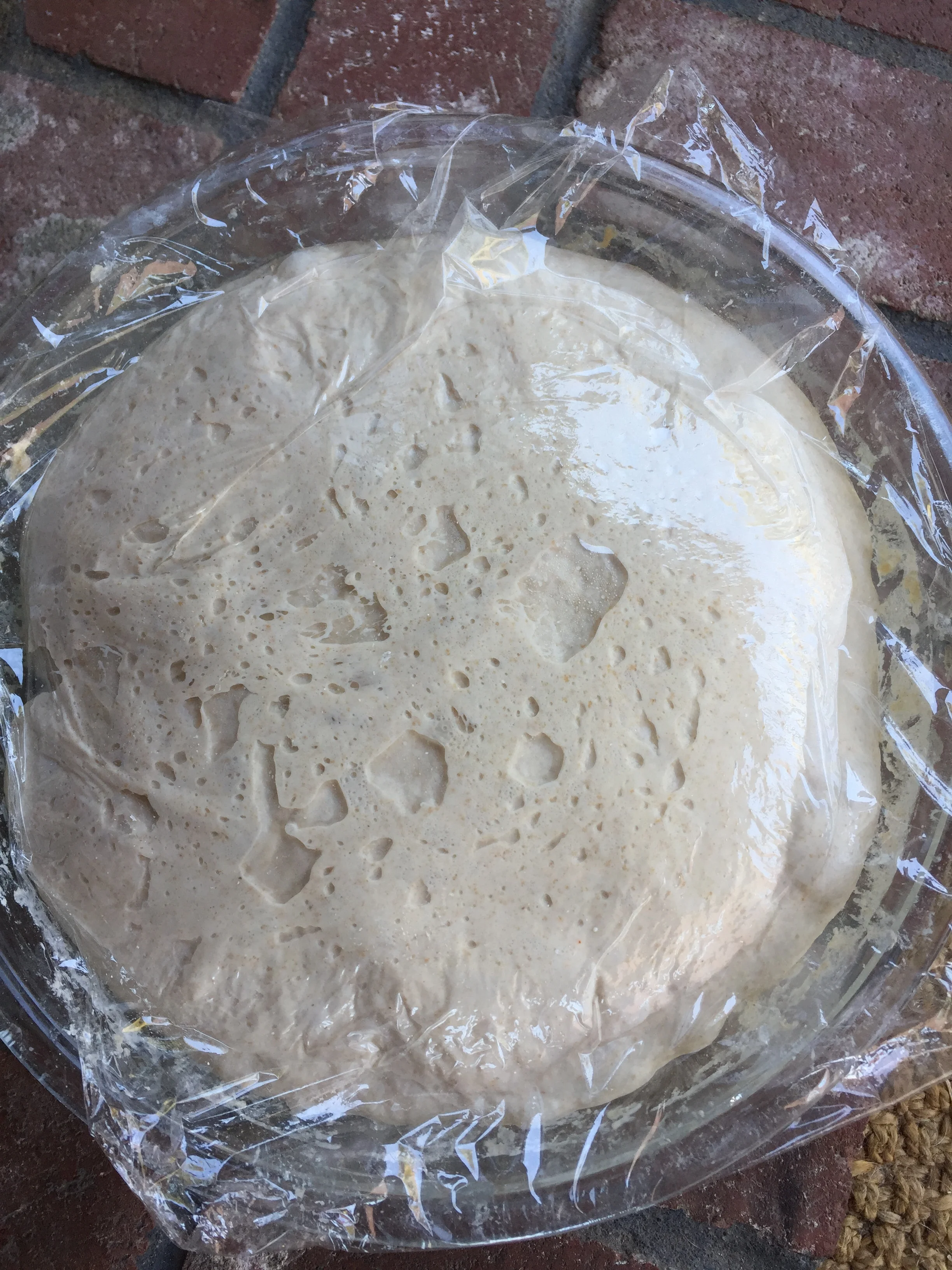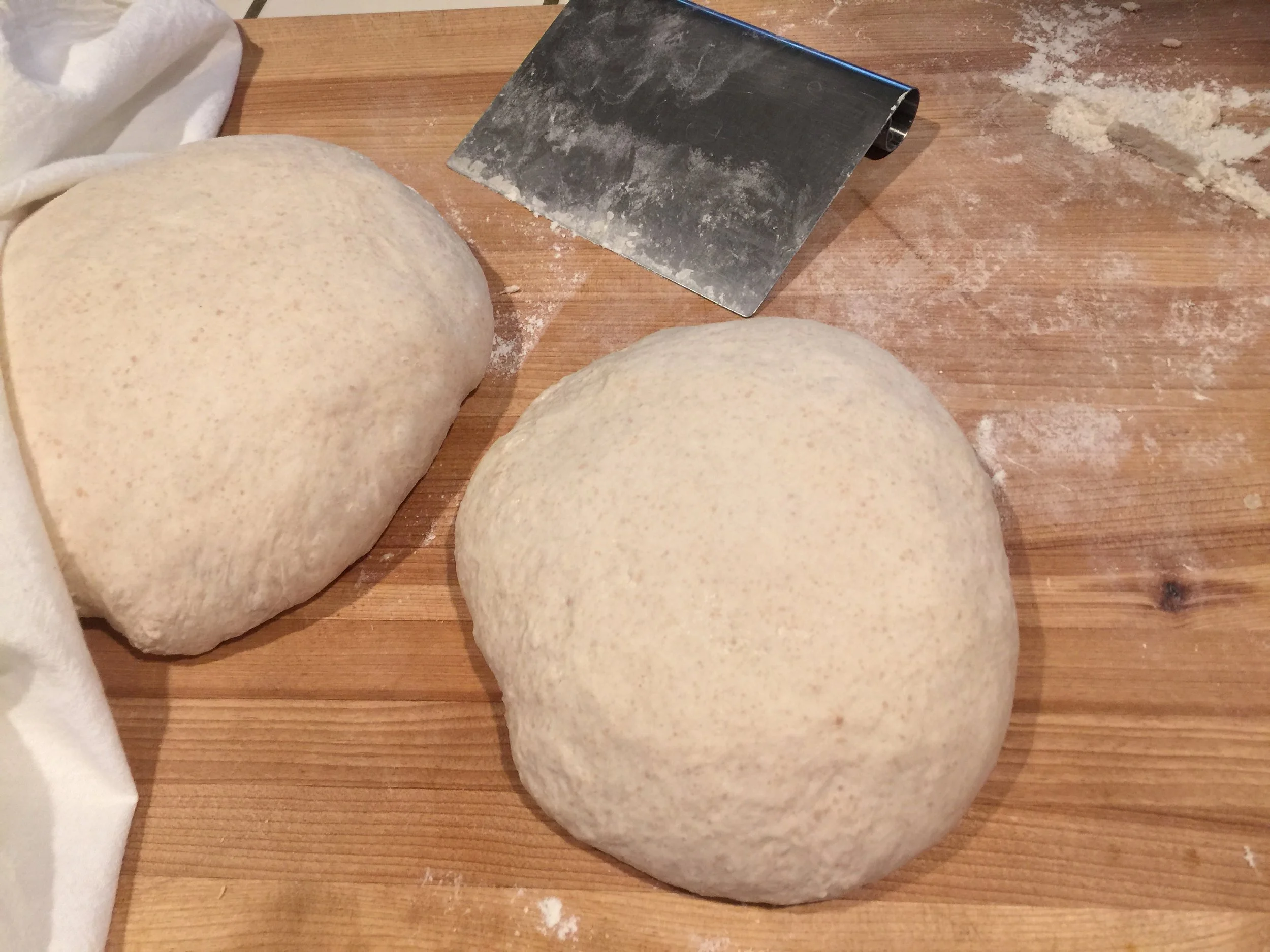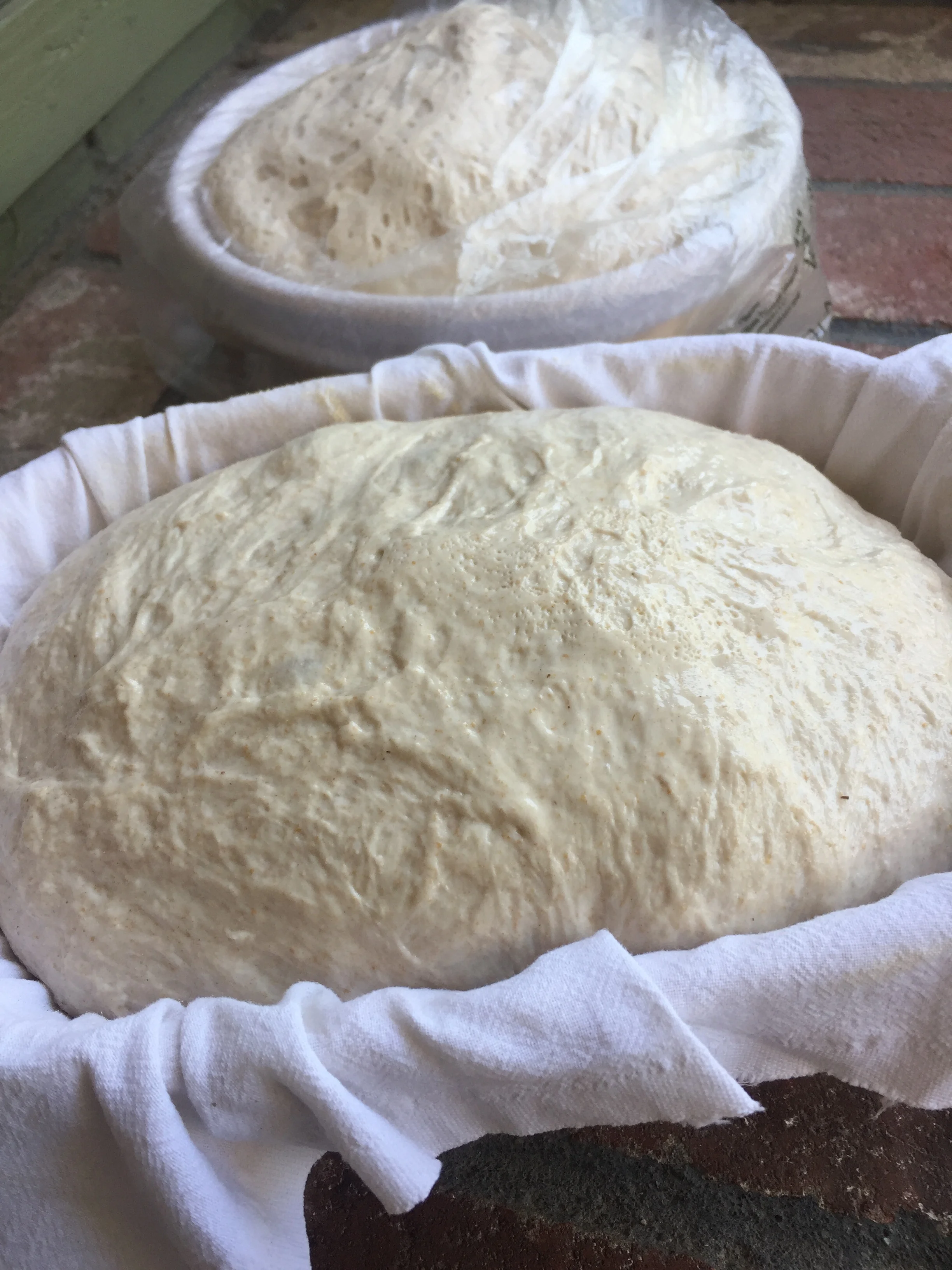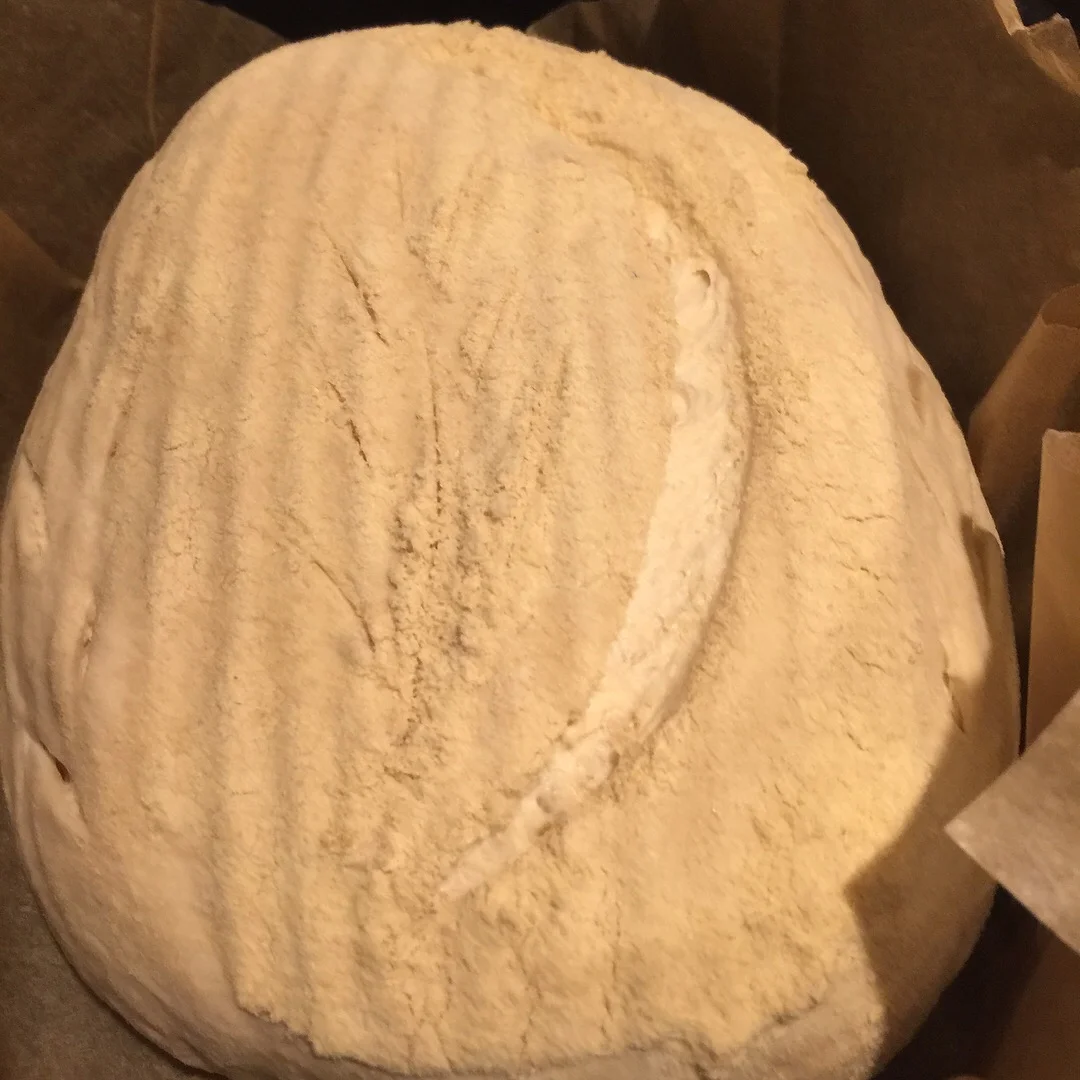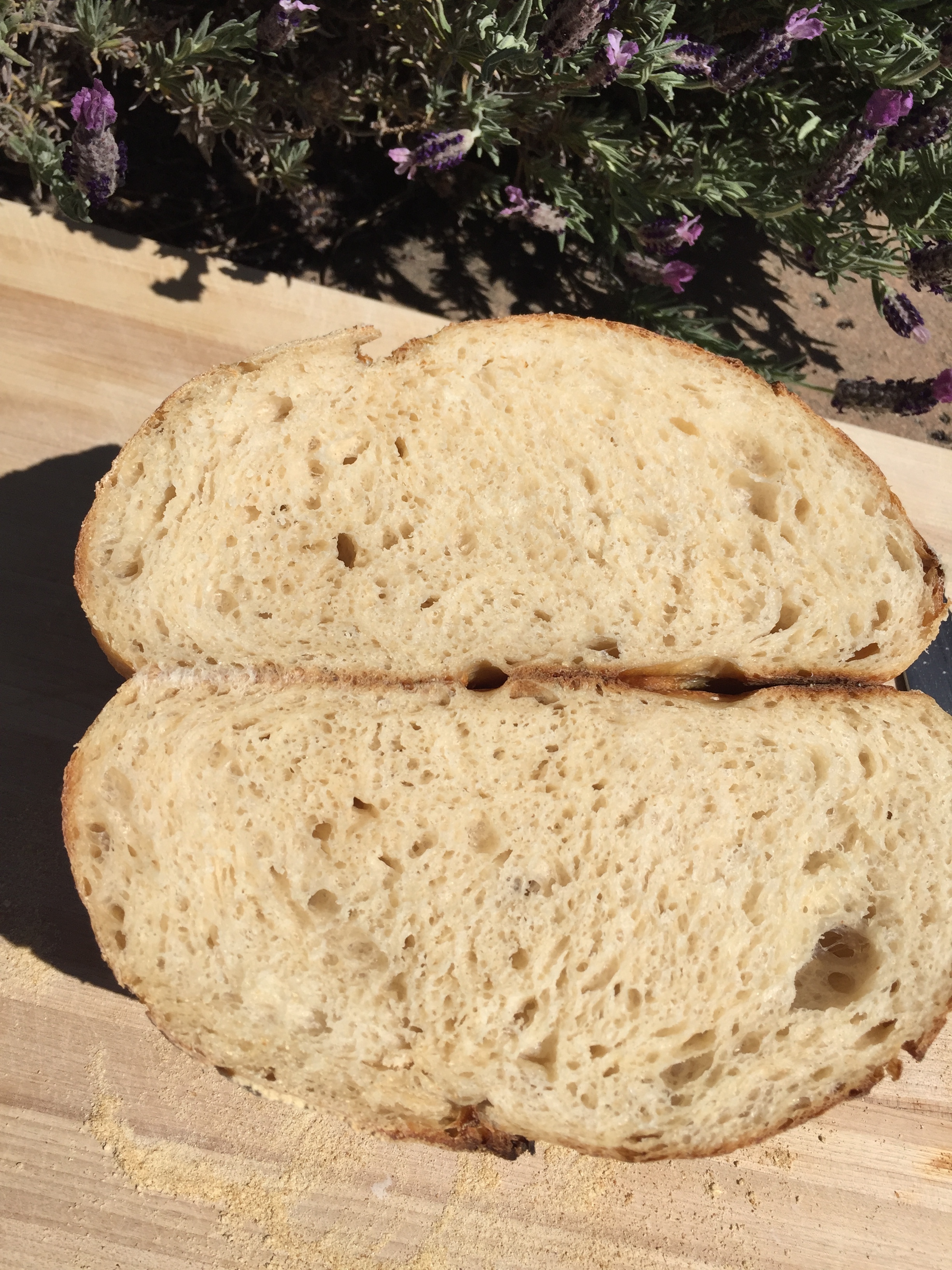Kamut Levain
This bread is a great tasting Sourdough bread. It is called a stretch bread because it is not kneaded but instead is gently stretched 3 or 4 times. A stretched dough is a technique that literally stretches the dough to aid the formation of a gluten network. This is done during the first fermentation when the dough is folded onto itself. Stretched bread are typically high hydration doughs (high water content). This recipe is a high-hydration bread yet lower than many, around 77%, making it easier for the baker to handle and stretch. Don’t be fooled by the lower water content; its crumb is soft and moist and light as a feather.
The salt in most of my stretch bread recipes may appear high at 2.5%, but the salt aids in the overall structure of the crumb. There is no kneading to a stretch bread, the gluten formation is achieved using high water content, higher salt and light folding.
My levain is stored at room temperature (60 to 77 degrees), not in the refrigerator. Please read my blog on starters for more information.
Autolyse and the first fermentation are at a much higher temperature than most at 85 degrees F. This is because my starter is naturally full of lactic acid bacteria and these lactic acid bacteria (LAB) like the heat.
I always perform a bench rest. The bench rest for this recipe is 30 minutes. Proofing is retarded in the refrigerator for 12 hours which helps to slow the fermentation down a bit and adds structure when turning the loaf into the dutch oven. Kamut has a nutty flavor and adds a golden color to the bread. My family loves it, and I hope you do as well.
Quail Hollow Kitchens’ Kamut Levain
Overall Formula - Makes 2 large 500 gram loafs
200 g Kamut (whole grain Central Milling – milled fine in a KoMo grain Mill)
300 g AP flour (Bobs Red Mill Organic) See note below
500 g bread flour (Kind Author Organic) See note below
750 g water non-chlorinated (hold back 4 TB approx. 50 grams)
200 g AP flour starter (feed in the last 6 hours, do a float test)
25 g sea salt
Liquid-Levain Build (your starter build)
200 g Ap Flour
200 g water
50 g mature starter
Day 1. Mix liquid levain about 6 to 12 hours before the final mix and let stand covered at room temperature about 65 degrees F
Day 2. Next day warm water to 84 degrees. Mix levain and water (except hold back). Next add Kamut and Ap flours. Slowly incorporate in bread flour until soft dough forms.
Autolyse
Allow to rest covered for 2 hours in 85 degrees F in a proof box. After the 2 hours gently fold in water and salt.
Water and salt are gently folded in after autolyse
Fermentation
Continue in proof box at 85 degrees for an additional hour and a half During this time gently fold dough every 30 minutes. This should be three additional folds after the salt addition. Remove dough from box, cover with a towel and allow to rise slowly for an additional hour and 1/2, you will see an increase in volume, large fermentation bubbles, and the dough will have a slight spring to its texture.
Dough after first fold
Dough after final fold and fermentation
Bench rest
Next empty contents of bowl onto a lightly floured bread board. .Split dough in ½ allow to rest 30 minutes
Proof
Shape dough into boule and place into well-floured proofing basket. Cover with plastic. Retard dough overnight in refrigerator for 12 hours.
Bake
Day 3. Preheat oven to 500 degrees F with a Dutch oven inside. Remove from refrigerator breads, slash with bread lame, and bake in a cover cloche which has been fully preheated to 465 degrees F for 25 minutes.
Remove cloche lid and continue baking for an additional 5 minutes or until the internal temperature is above 200 yet below 210.
Food Science Notes: This recipe has been submitted to the Bread Bakers Guild of America by Quail Hollow Kitchens. Definition of a levain per the Bread Bakers Guild of America, “Levains may be manipulated with hydration, time and temperature to produce more or less acidic flavor profiles and may be used in all types of dough, including sweet dough.” The flours have been specified in this recipe to avoid collapse during fermentation. The flour/wheat varieties noted maintain the dough with balanced rheological properties. Some wheat varieties can result in highly porous dough characteristics which prevents the dough from reaching a maximum height during final fermentation. What is then seen in the bread is a collapse in the elevated fermentation temperatures. The resulting crumb dense and heavy. I am not endorsing a specific brand, it has just been through experimentation and observation that these varietals work well.

